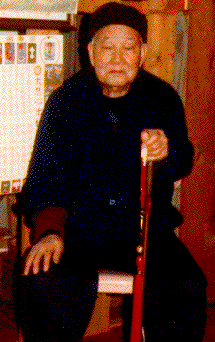Recent news feeds stressed again the importance of a Metarobic or other physiological understanding behind the benefits of Tai Chi. It is nice seeing Tai Chi getting more exposure, but elements of these articles highlighted the need for research and promotion of a Metarobic understanding behind the benefits of these exercises. In the first article, on a study on the benefits of Tai Chi for type 2 diabetes (Click HERE to read the article), it was stated that benefits for type 2 diabetes might be due to Tai Chi being a moderate form of exercise. The author further defined moderate exercise as: "Any activity that leaves you feeling warm and slightly breathless but still able to hold a conversation counts as moderate exercise.” If there is one thing about Tai Chi, it is that it does not leave you in any degree breathless. Indeed, the feeling can be described more as being “breathful.”
Others have tried to classify exercises such as Tai Chi as a low impact or moderate form of aerobic exercise. There is a trend to try to categorize these exercises as low impact aerobics, with the all too often unintended effect of people speeding up their practice, to hit target heart zones. This may negate the very thing which makes tai chi and qigong so valuable for chronic conditions. Until the development of a Metarobic understanding, researchers have had no other “go to” for the reason for the many and sometimes dramatic benefits of Tai Chi. This approach has several drawbacks, the first being that it is inaccurate. Tai Chi has only a mild effect on heart rate, and when practiced correctly, does not raise it to even low impact aerobic levels. And some stationary forms, and forms of Qigong, do not raise the heart rate at all. I have noticed that in an attempt to gain “aerobic” benefits, some teachers and practitioners have sped Tai Chi up, to the point of removing two of the primary benefits of Tai Chi – a relaxed body combined with slow deep breaths. Relaxation with a focus on the breath increases unique Metarobic effects related to enhanced blood oxygen saturation, diffusion, and oxygen based metabolism. It is my hope that in time, a Metarobic understanding of these exercises will help overcome the tendency to try to classify Tai Chi as low impact aerobics, or as moderate exercise. As noted in my book “Mindful Exercise: Metarobics, Healing, and the Power of Tai Chi,” other researchers have also stated a need for such an evidence and theory based approach, from which to categorize and better study and promote these unique exercises. It is their very nature as a slow moving, breath-focused relaxation exercise which has such tremendous benefits for health and chronic conditions (again, see my book for more details).
The second recent post was a tongue in cheek article by Simon Doonan, on her experiences with Tai Chi (Click HERE to read the article). In the article Simon notes that her husband came home from work, saw her doing Tai Chi, and thought she was having some sort of episode. She stated that she avoids trying to explain why she does Tai Chi, in part because there is no way to rationalize Tai Chi as muscles toned or calories burned. That as an exercise, it is intrinsically mysterious. I appreciate the depths of Tai Chi, which at times can be quite “mysterious.” But her statement again stressed the need for promoting a Metarobic understanding of Tai Chi. It removes the WTF (noted below), with “Ah, so that’s why people do this.”
The WTF comes from Simon’s observation of the First Lady, Michelle Obama, learning Tai Chi while on a trip to China. Simon noted a frown and an expression that she described as “This won’t tone my arms. WTF?” Again, a Metarobic understanding will replace that with a smile and an “Ah, so that’s why I am doing this!” One final note, further stressing this point, comes from a reader comment: “Everybody over this age is Tai-curious. Everybody under 60 thinks it is utterly idiotic.” Metarobics replaces idiocy with understanding, including an understanding of the need for exercises such as Tai Chi for chronic conditions, and answers the questions of the older “Tai-curious” group.
For a detailed explanation of Metarobic effects, supporting research for health and a wider range of chronic conditions, and over 50 case stories, see “Mindful Exercise: Metarobics, Healing, and the Power of Tai Chi,” available at your local bookseller, or on Amazon.com (Click HERE for link).






 RSS Feed
RSS Feed